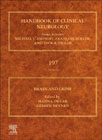
Brain and Crime, Volume 197 reviews the relation between brain function and aggressive and rule-breaking (criminal) behavior. The book's focus is on the violation of social rules and not on violation of regulations that are different in different counties. It discusses the development of this behavior from childhood into adulthood, along with the mechanisms associated with the risk for aggression and rule-breaking behavior. In addition, it explores from a behavioral level concepts like psychopathology, syndrome and concepts from law, such as crime, defendant and offender. Finally, sections explore brain function, including emotion, cognitive processes, and decision-making. From the perspective of brain structure, the book covers brain networks and brain disorders. In genetics, the book includes the influence of genes and the mechanisms of epigenetics. All chapters are intended to provide information for use in the diagnosis and treatment of disorders, and in assessment and prevention. Discusses the development of rule-breaking (criminal) behavior from childhood into adulthood Covers the influence of genes and the mechanisms of epigenetics Includes the diagnosis and treatment of disorders, along with assessment and prevention INDICE: Section I. Introduction 1. Introduction: On brain and crime Section II. Structure and Function 2. Genetics and epigenetics of human aggression 3. Network localization of antisocial behavior in neurological patients: Evidence and implications 4. Prison and the brain 5. Forensically relevant challenging behaviours and the genetics domain 6. Social-affective functioning and learning in psychopathy 7. Amygdala connectivity and ggression 8. The (a)moral brain: When things go wrong Section III. Brain dysfunction 9. Illicit drug use and violence 10. Child maltreatment and victimization 11. Sexual offenses and the brain 12. The risk of criminal behavior in the elderly and patients with neurodegenerative disease 13. Fetal alcohol spectrum disorders and the risk of crime Section IV. Assessment and Treatment 14. Cognition, criminal conduct, and virtual reality: Understanding and reducing offending using simulated environments 15. Added value of neurotechnology for forensic psychiatric and psychological assessment Section V. Ethics and Law 16. Neurolaw: Challenges and limits 17. Why neuroscience changes some things but not everything for the law 18. Neurotechnology to reduce recidivism: Ethical and legal challenges
- ISBN: 978-0-12-821375-9
- Editorial: Elsevier
- Encuadernacion: Cartoné
- Páginas: 300
- Fecha Publicación: 27/09/2023
- Nº Volúmenes: 1
- Idioma: Inglés
